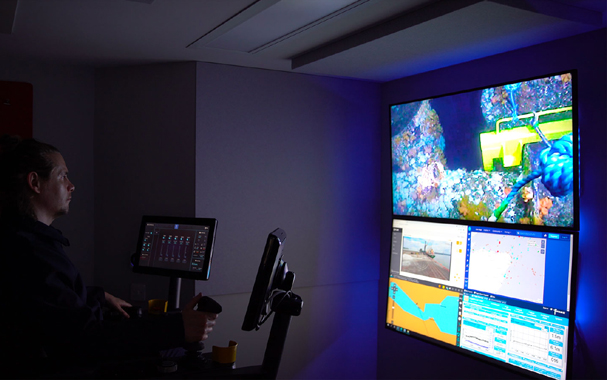As the global offshore wind energy market continues to mature, smart new ways to boost operational efficiency are emerging. One of the most extraordinary is a transition to remote operations using technology which just a few years ago would have been considered a futuristic dream.
Within a complex regulatory framework, offshore wind operators must undertake regular maintenance of above-water assets and inspection of underwater components. As a relative newcomer to the offshore environment, the wind industry is benefitting from technological advances and a new risk-based approach to maintenance, exploiting lessons learned and experience refined in the oil and gas industry.
Remote operations deliver significant benefits
With the Covid-19 pandemic adding unforeseen restrictions, the advantages of remote working go way beyond the obvious cost savings. The much-improved safety aspect of remote operations, minimising risk by removing the need for personnel to operate in hazardous environments, is accompanied by other key benefits. For example, not requiring fully crewed survey vessels and associated travel delivers further cost savings and a reduction in carbon footprint. And, in the event of local and international travel restrictions and social distancing measures, remote operations ensure business continuity.
Together with strict regulatory requirements, the mix of stakeholders involved in offshore wind, including governments, energy regulators and insurance companies, has resulted in a rigid maintenance regime where typically 100 % of assets must be inspected every 5 years. Operation and maintenance (O&M) programmes can realistically be reduced to a smart level with independent advice and utilising state-of-the art remote operations centres (ROCs) with capabilities that are helping to accelerate the transition to renewable energy.

Remotely operated vehicle controlled from a Smart chair at Fugro’s Aberdeen ROC
Connecting with experts
To meet the requirements of round-the-clock operations, it is essential that the offshore energy industry has access to experts at all hours. Remote support includes advice and guidance from survey engineers, remotely operated vehicle (ROV) pilots, software specialists and a raft of other skilled personnel who are all on hand 24/7 at ROCs.
Connecting you with your project teams and representatives in real time, view of ‘the full picture’ allows you to advise, make live (often rapid) decisions, and engineer critical solutions. As only the specialists that are needed for the project are utilised, remote solutions are always scalable.
Cost and efficiency benefits can be brought to O&M programmes when expertise is combined with an array of technologically advanced equipment, available for a broad range of remote marine tasks:
- A fleet of uncrewed surface vessels (USVs) is capable of beyond-line-of-sight operations. Effecting the ultimate combination of advanced technology, an ROV can also be carried by a USV and deployed at an offshore site for field interventions. Cutting CO2 emissions by up to 96 %, USVs are also supporting sustainable operations.
- Advanced streaming technology can be used for remote piloting of ROVs. Video, synchronised Geo-data compression, and optimised streaming allow remote inspection while you can also access the stream through a secure web interface.
- Data analysis is facilitated via Fugro’s proprietary Back2Base technology, a process that packages survey data and delivers it to the ROC while survey operations continue. By maximising satellite link bandwidth, latency is reduced and lag minimised, enabling efficient remote ROV operations. With decisions made in real time, inspections can be modified if areas of particular interest need investigating.
- Live augmented reality (AR) monitoring adds an essential level of support to offshore operations. Using AR headsets, experts provide advice to remote project sites, enabling faster decision-making and reducing downtime.
Into the future
Wind energy projects are a major force in the global transition to renewable energy and the reduced environmental impact of remote operations is reinforcing this movement. Cost savings and risk mitigation are also significant factors in the remote execution of offshore projects.
While today it is primarily the offshore energy industry that is seeing the benefits of remote operations, it is anticipated that applications in offshore hydrogen, defence, and carbon capture and storage will emerge. With an eye on an autonomous future, ROCs are the foundation for highly scalable operations, with tangible benefits for every client.
DID YOU KNOW?
- Operations and maintenance accounts for approximately 30% of overall offshore wind farm costs
- Since launching its first ROC, Fugro has completed 174,287 project hours and counting of remote operations for global clients
 KEYFACT Energy
KEYFACT Energy